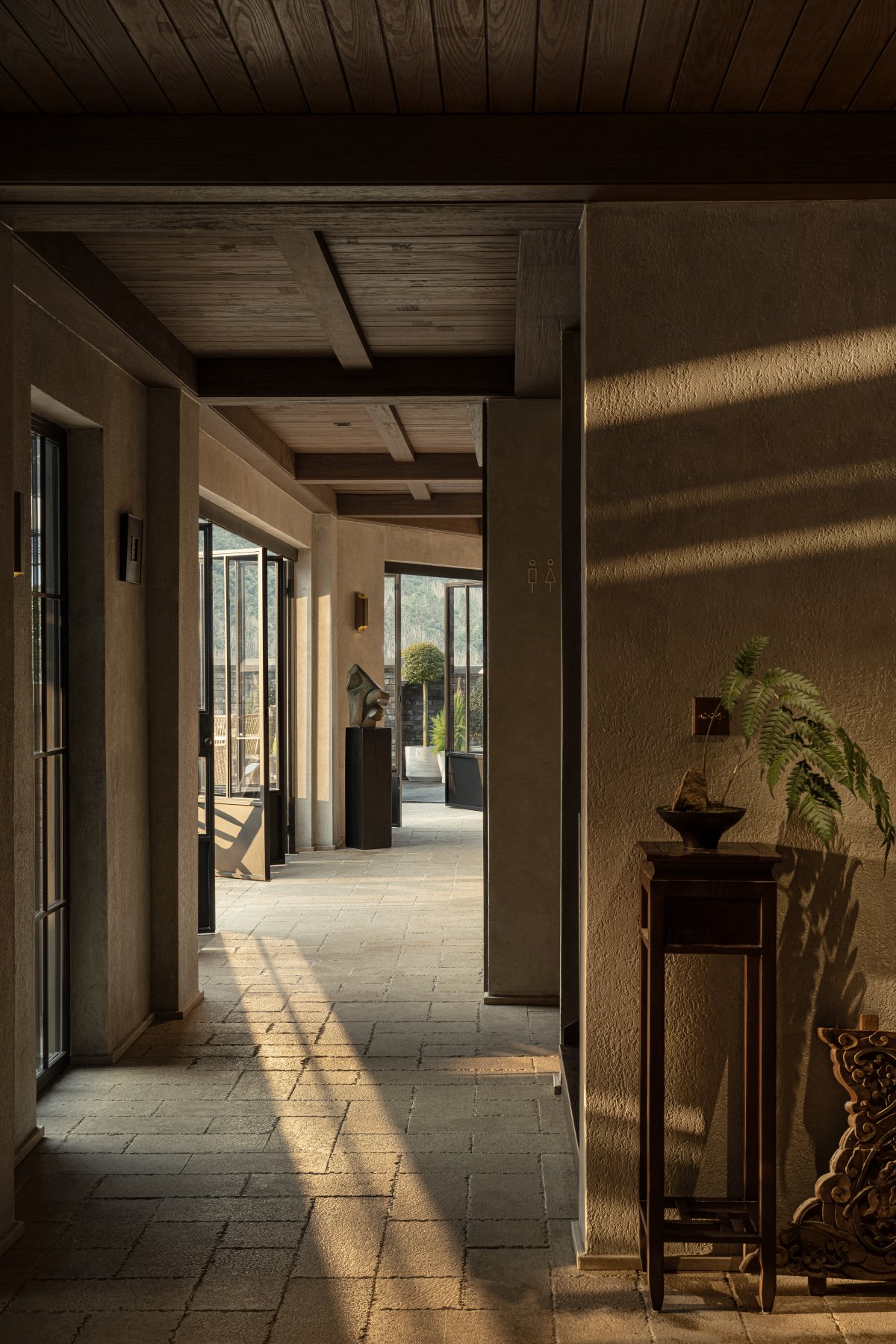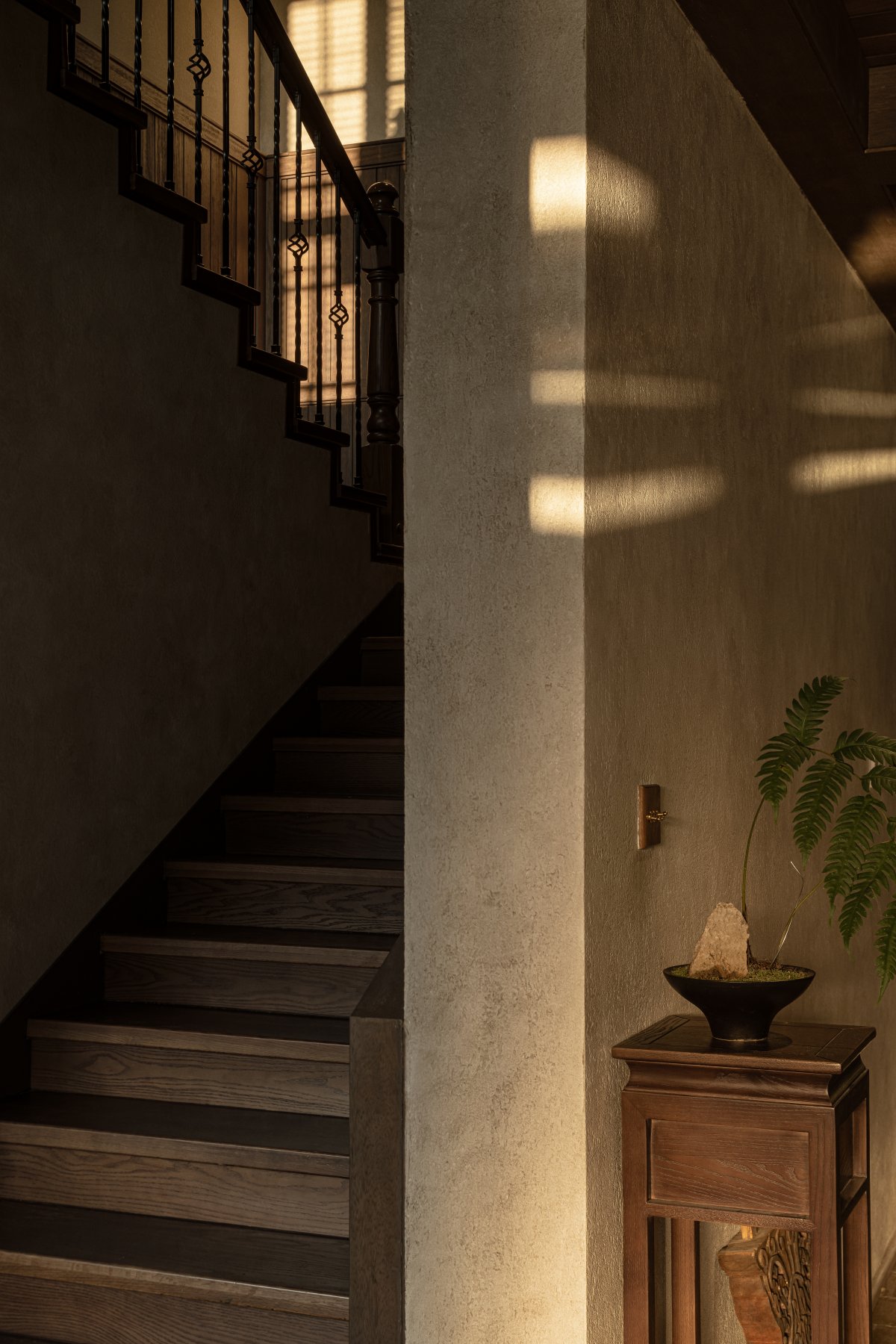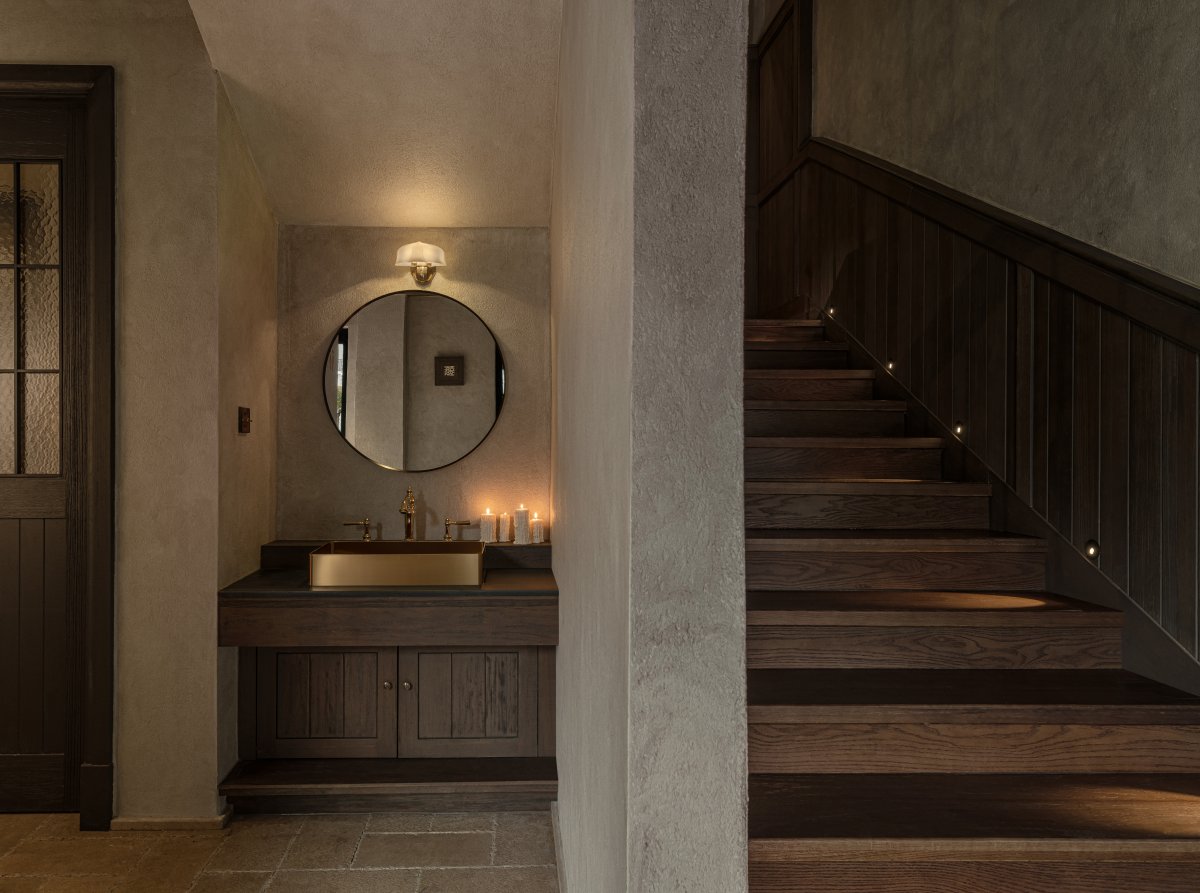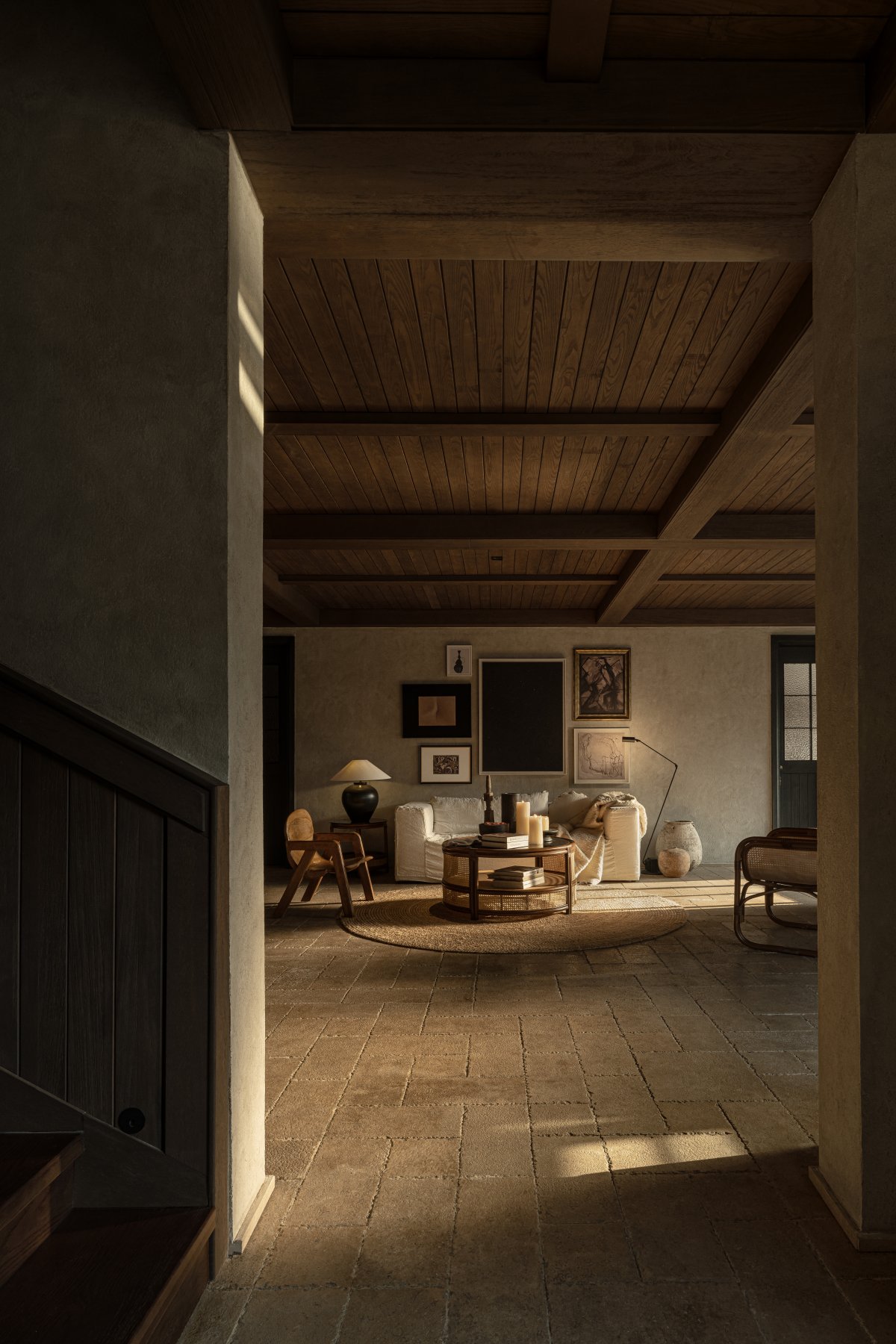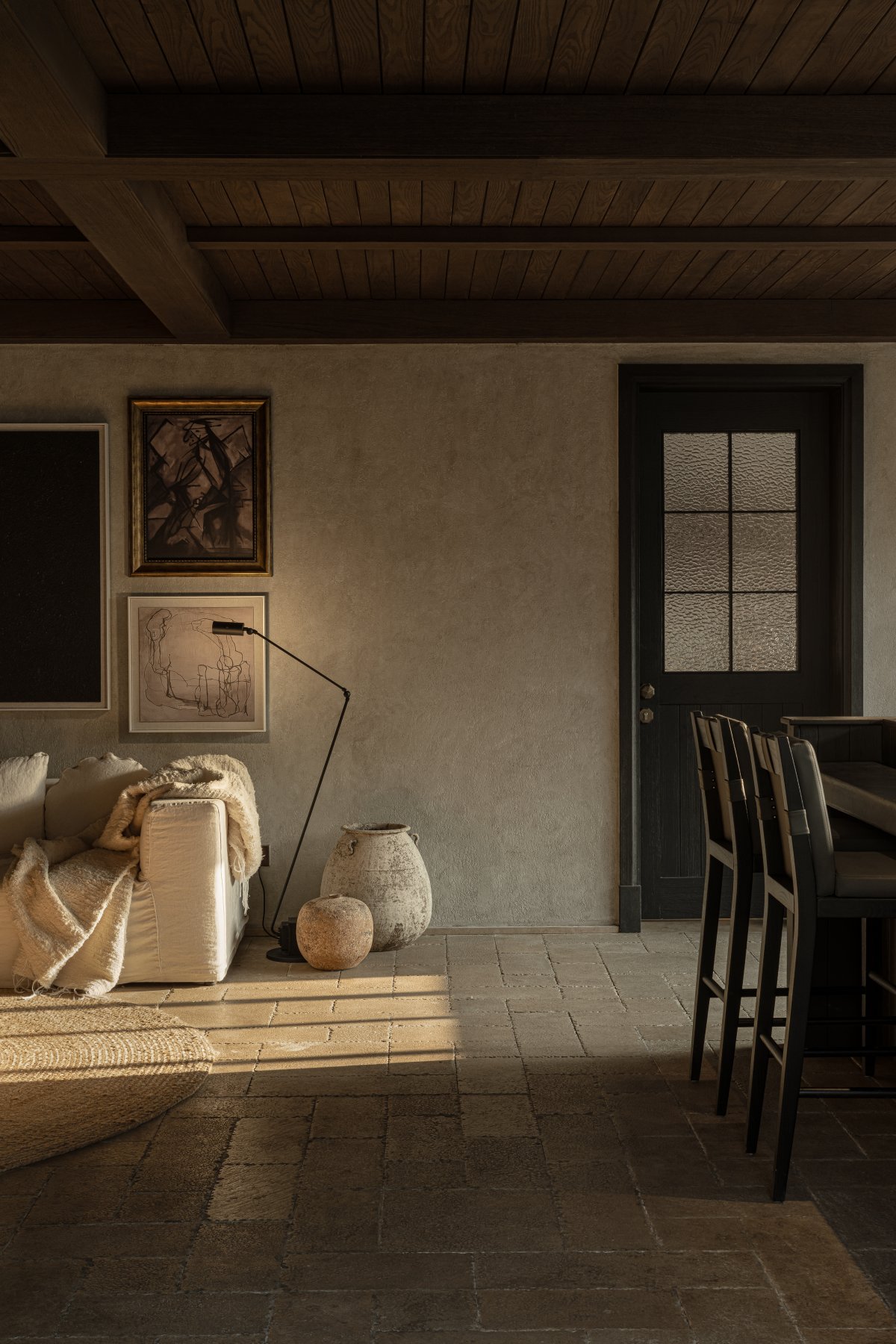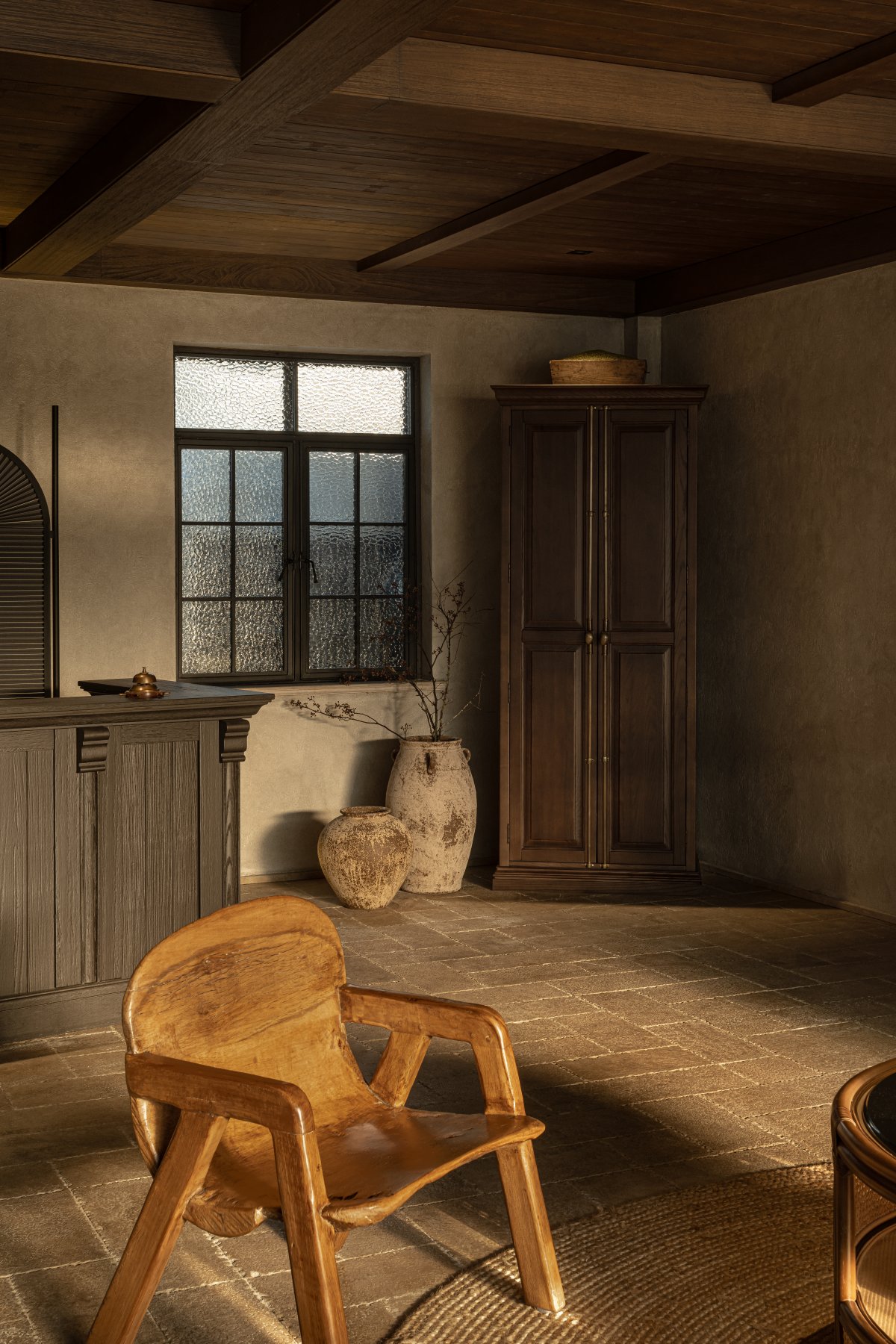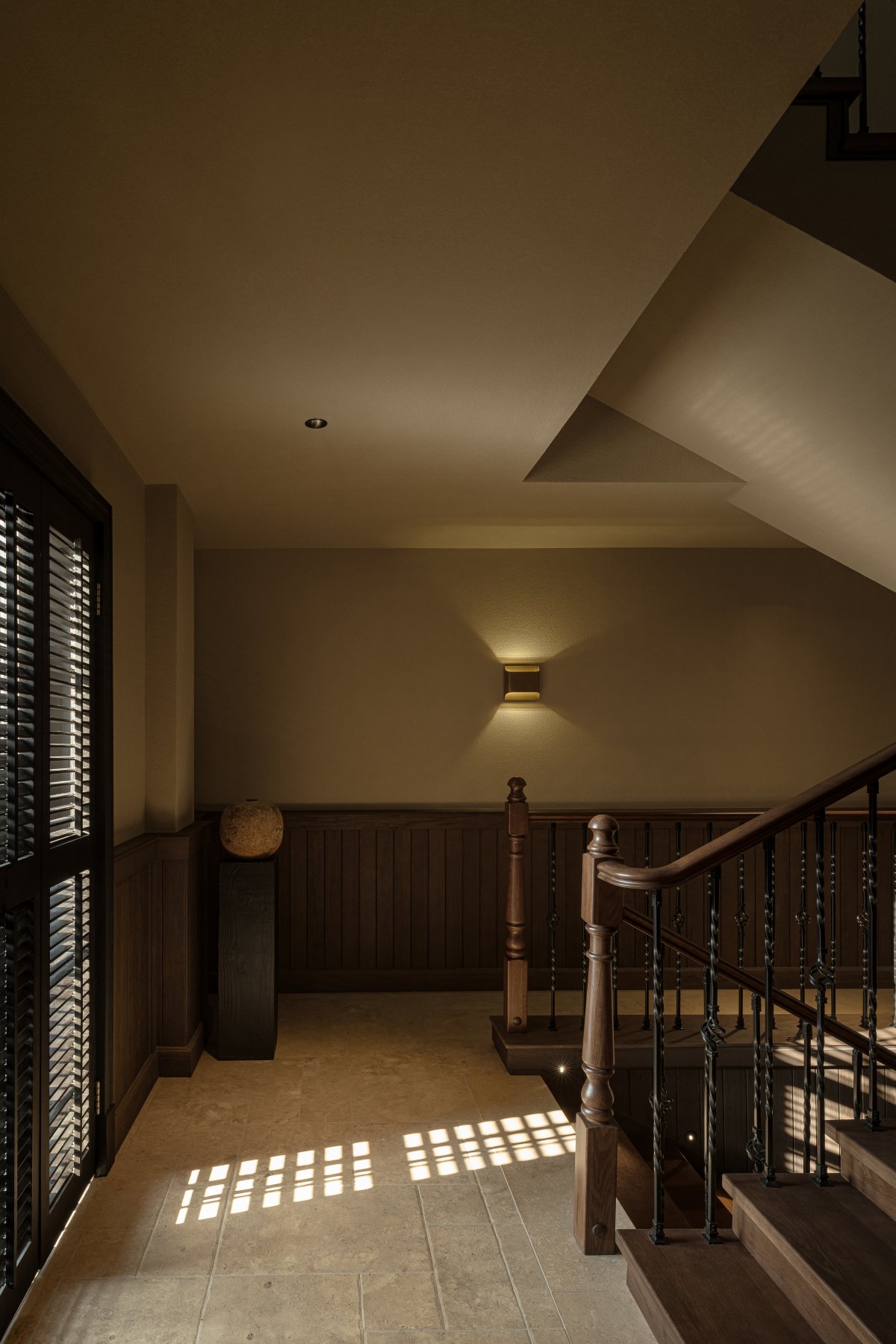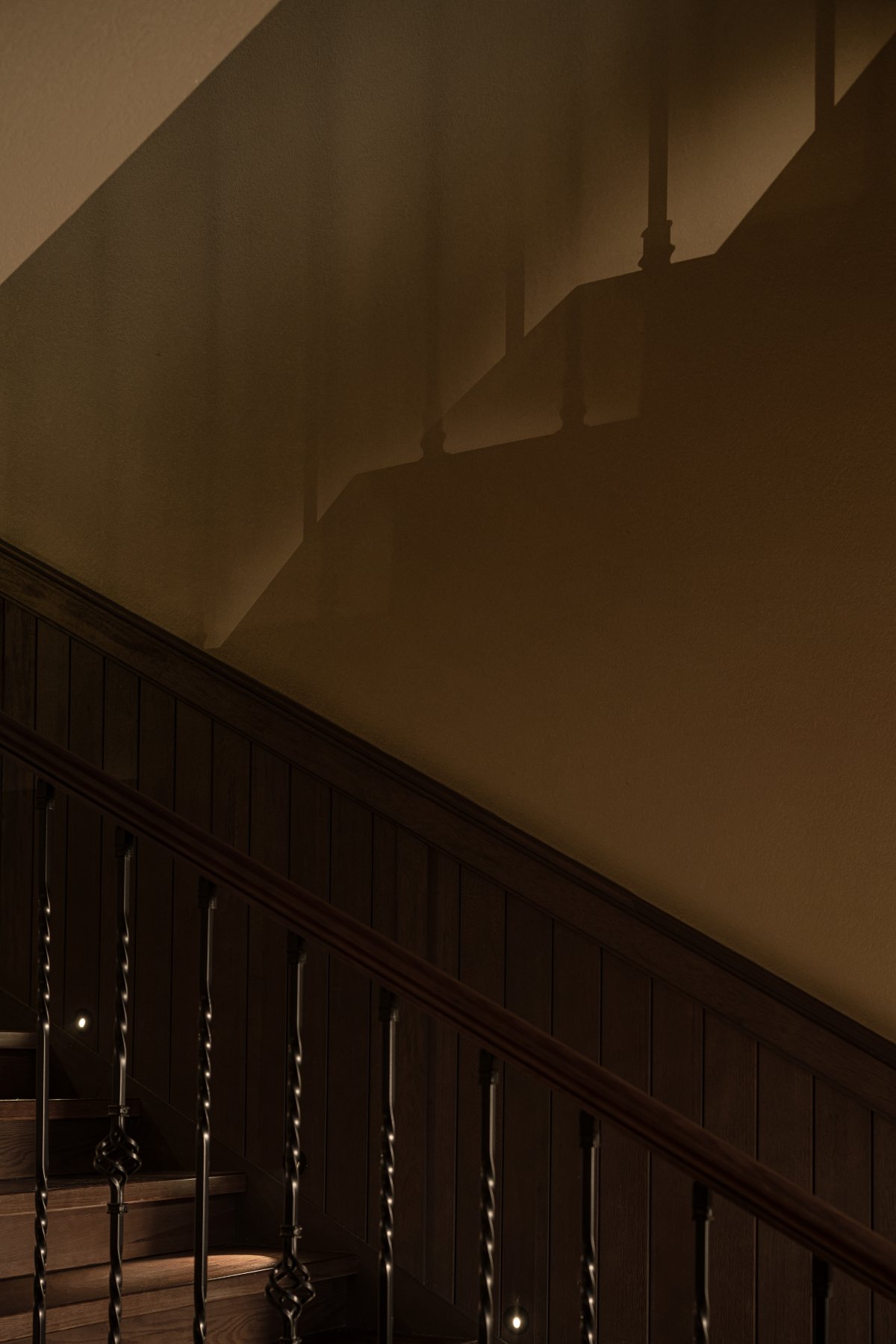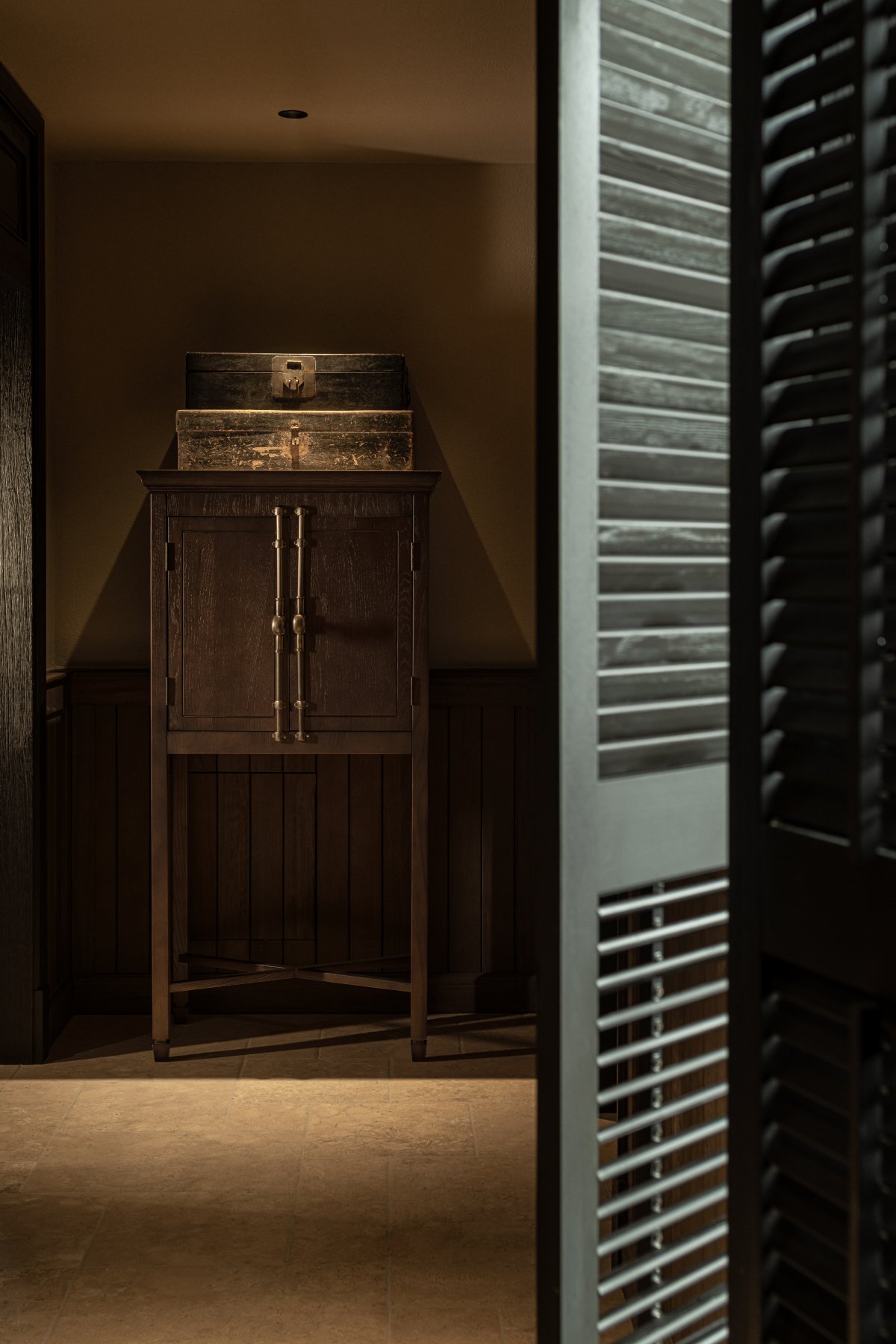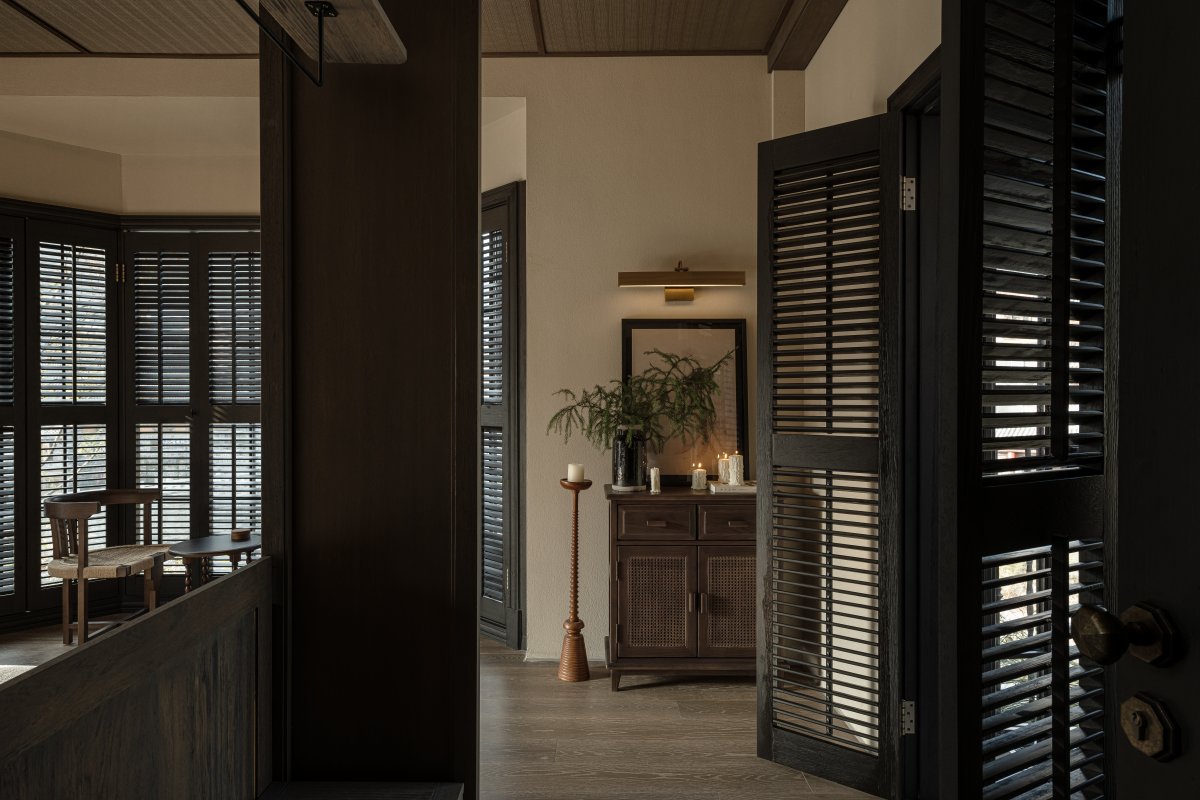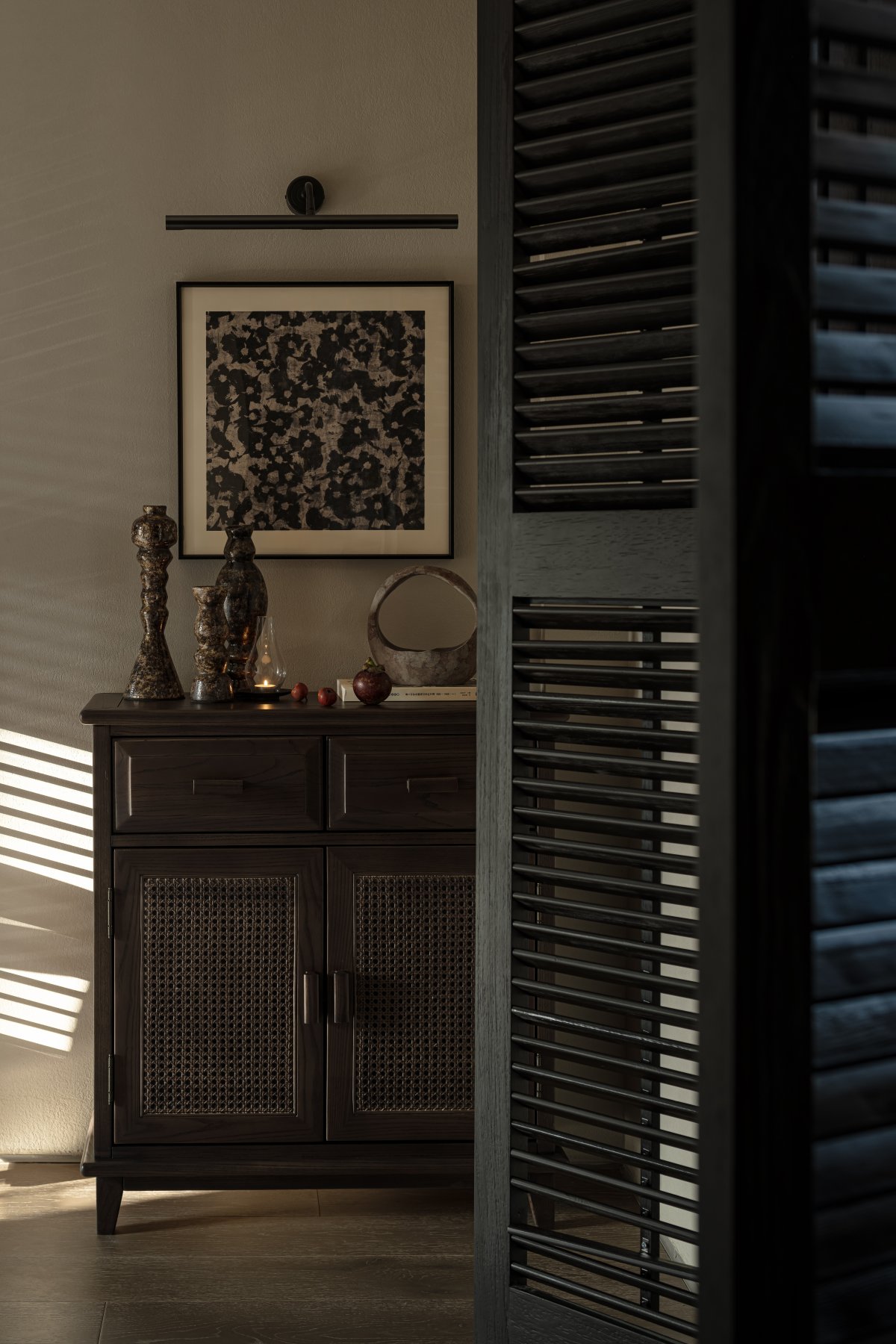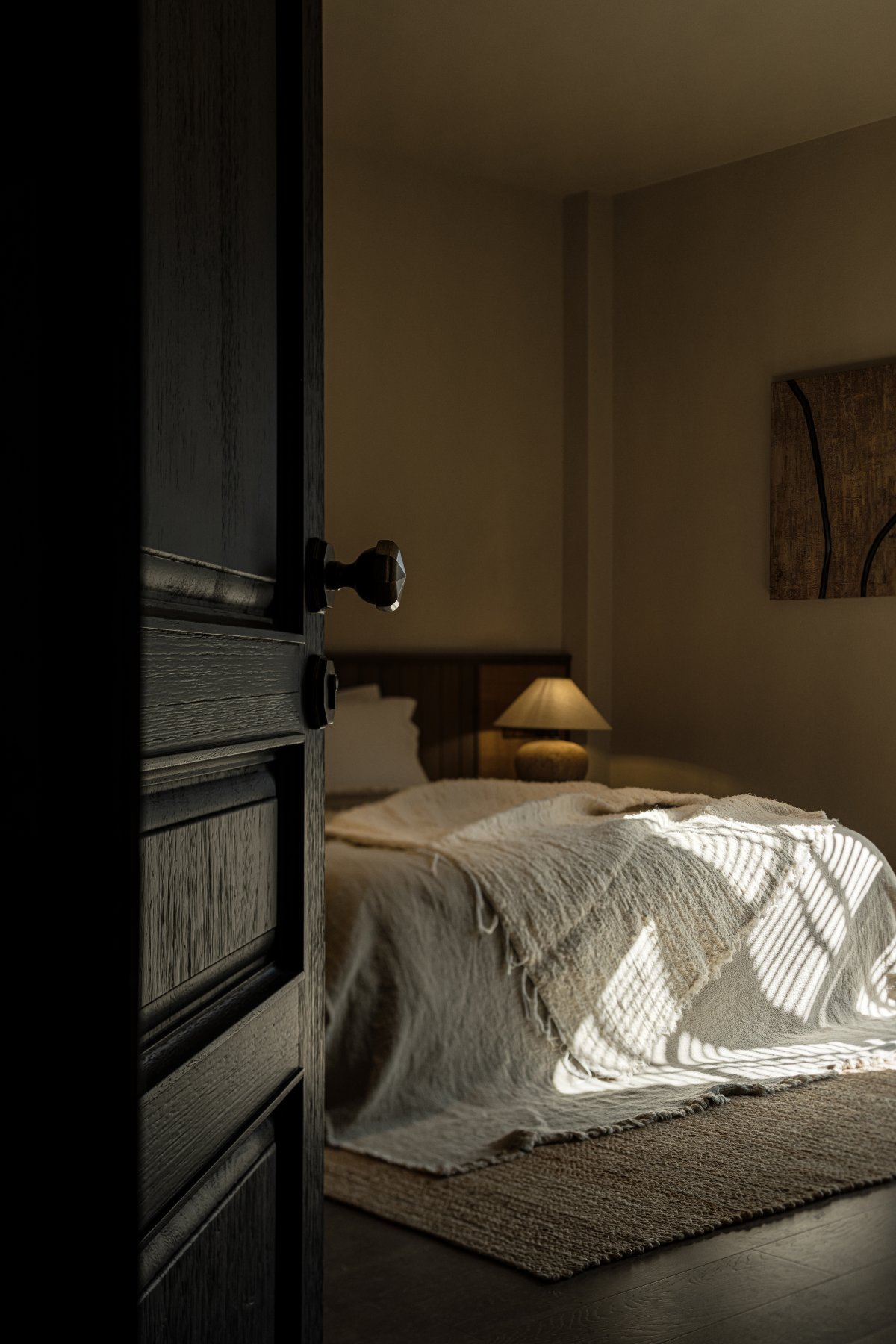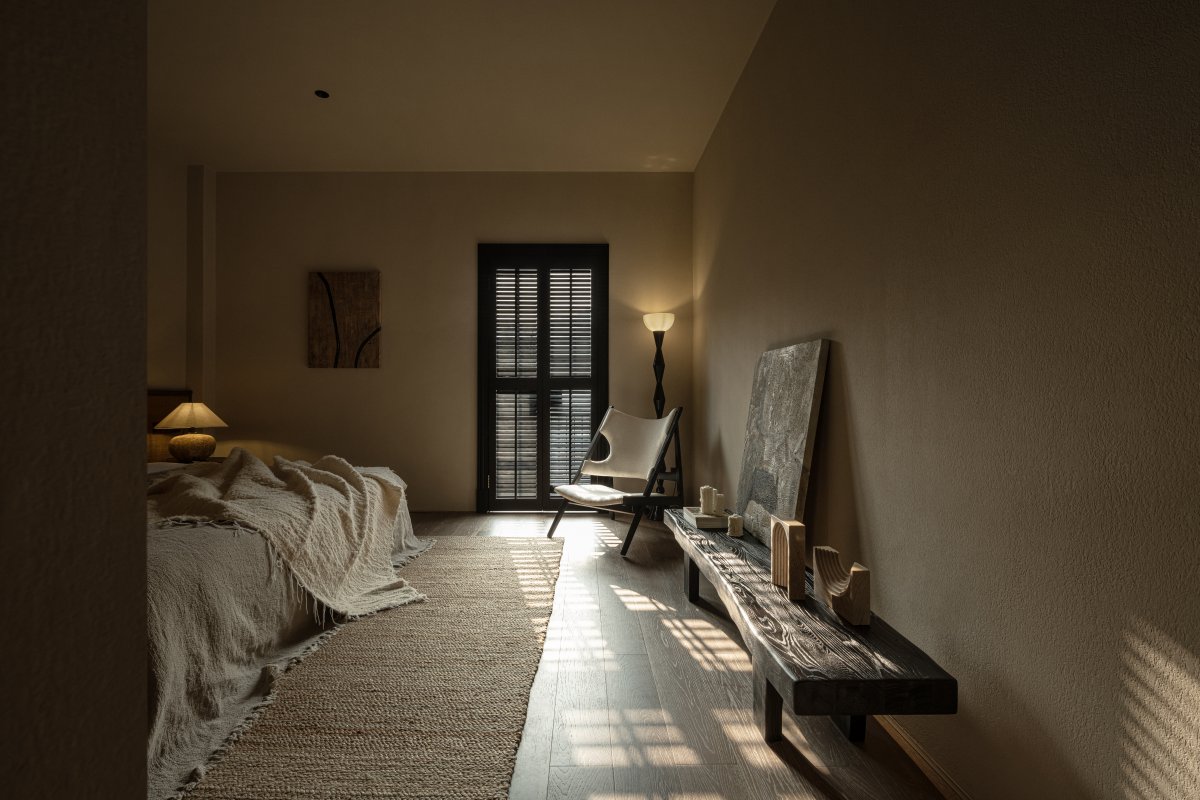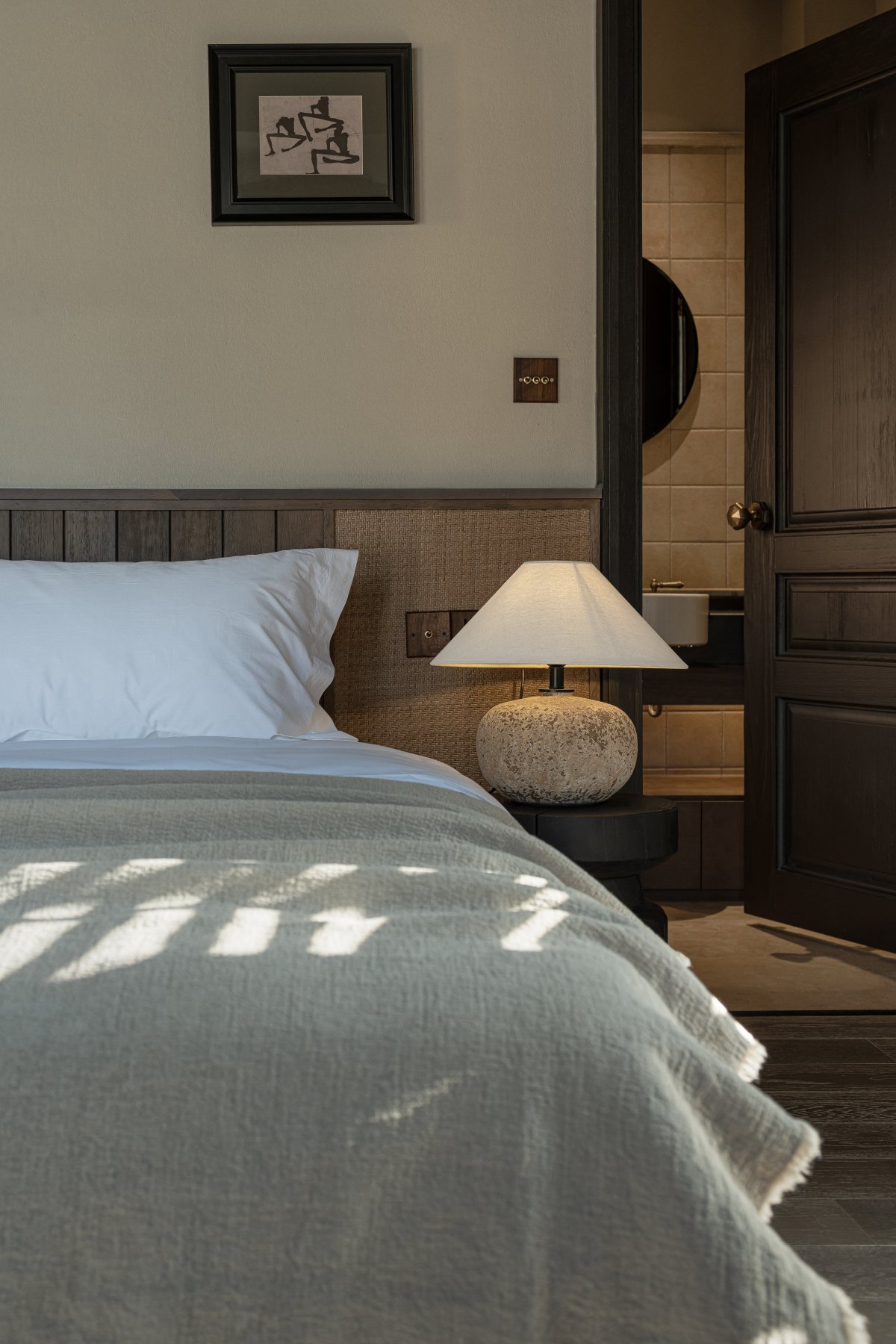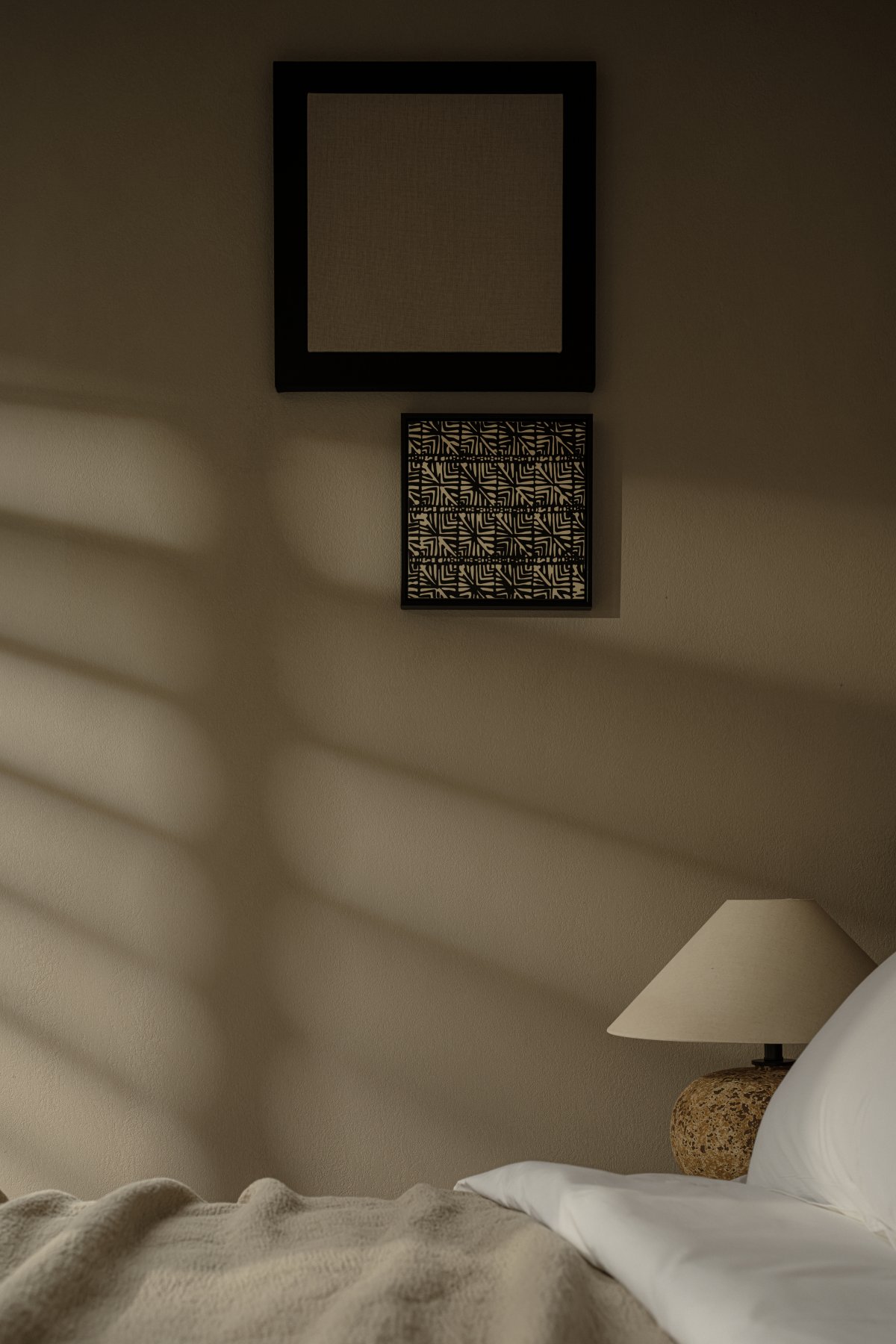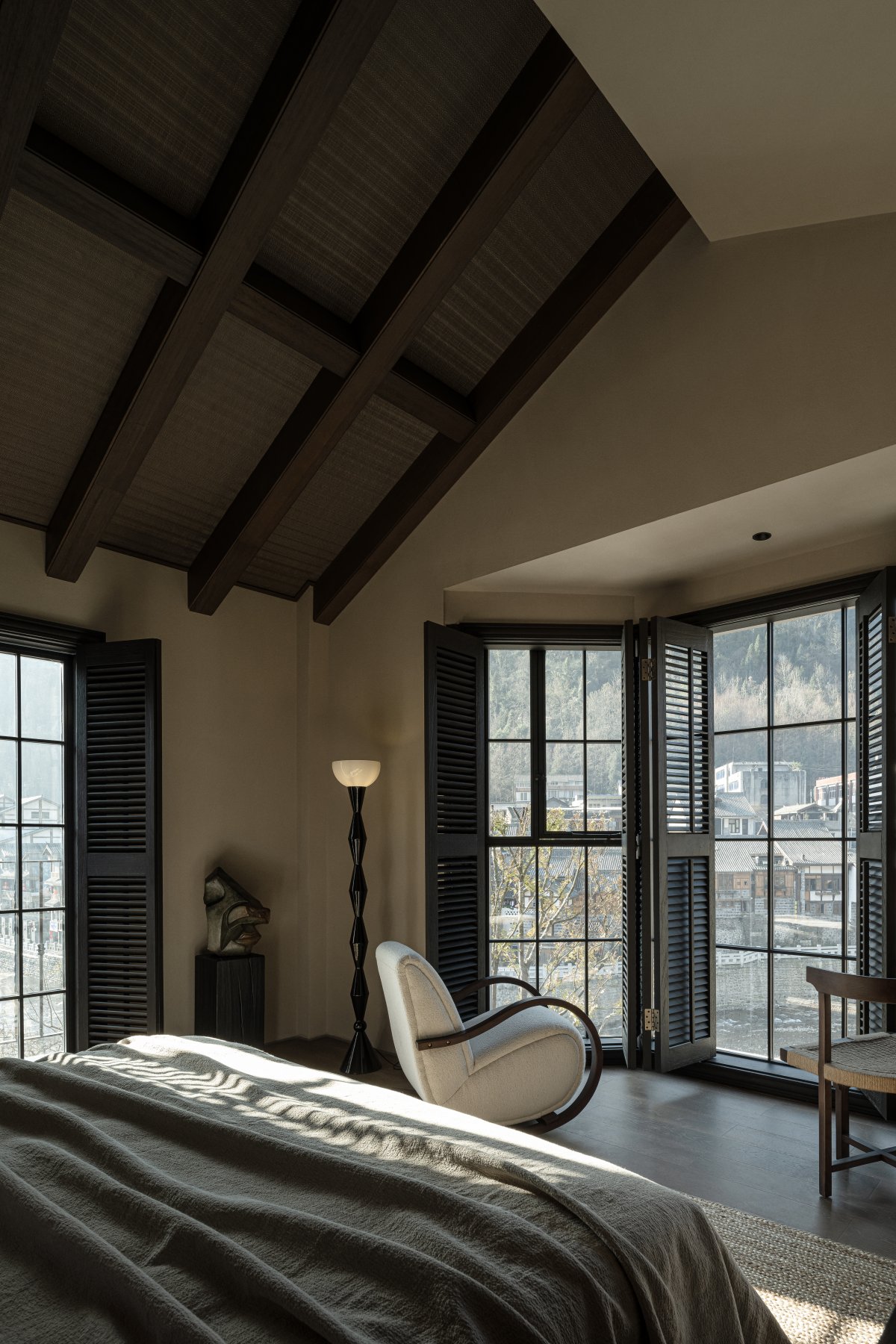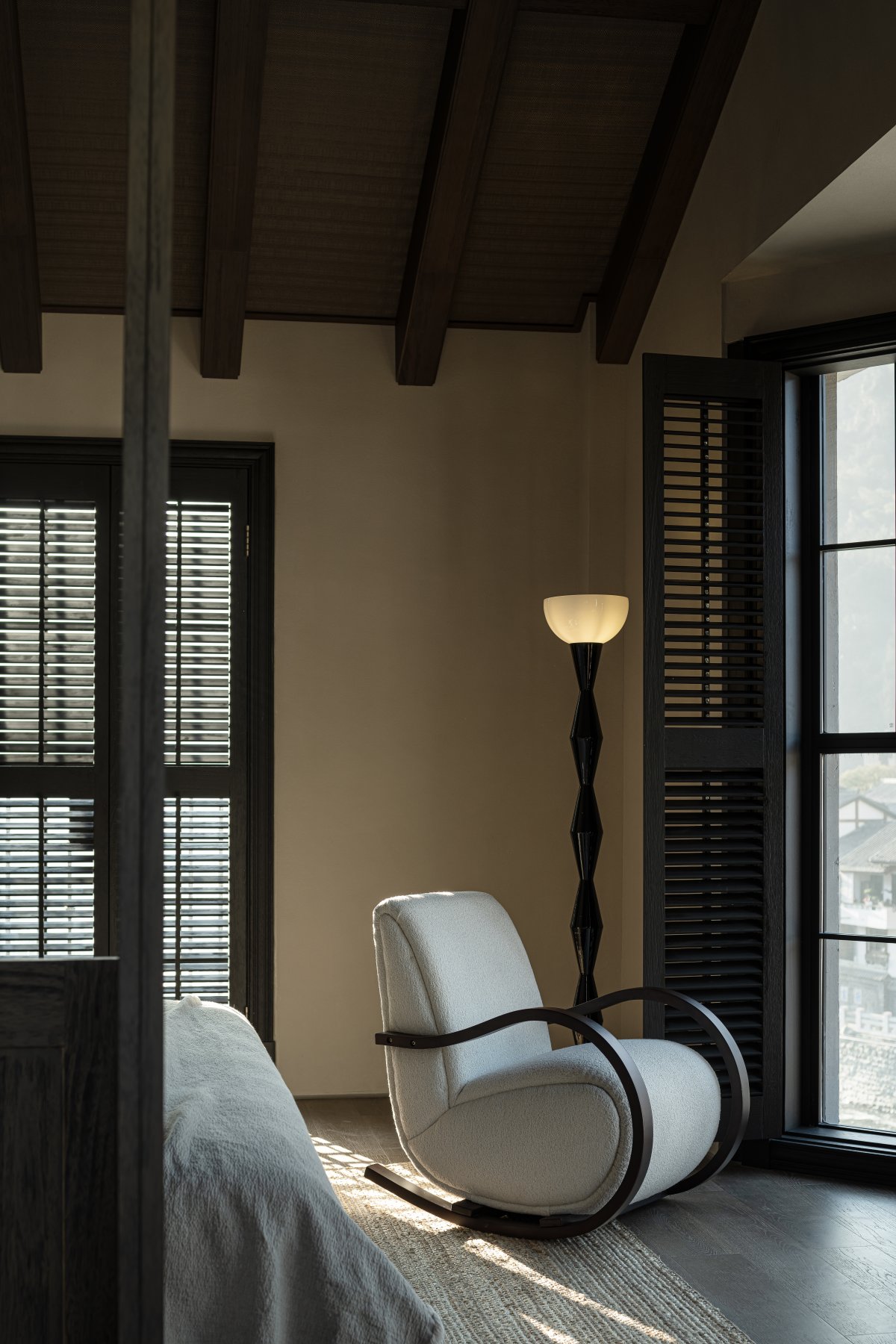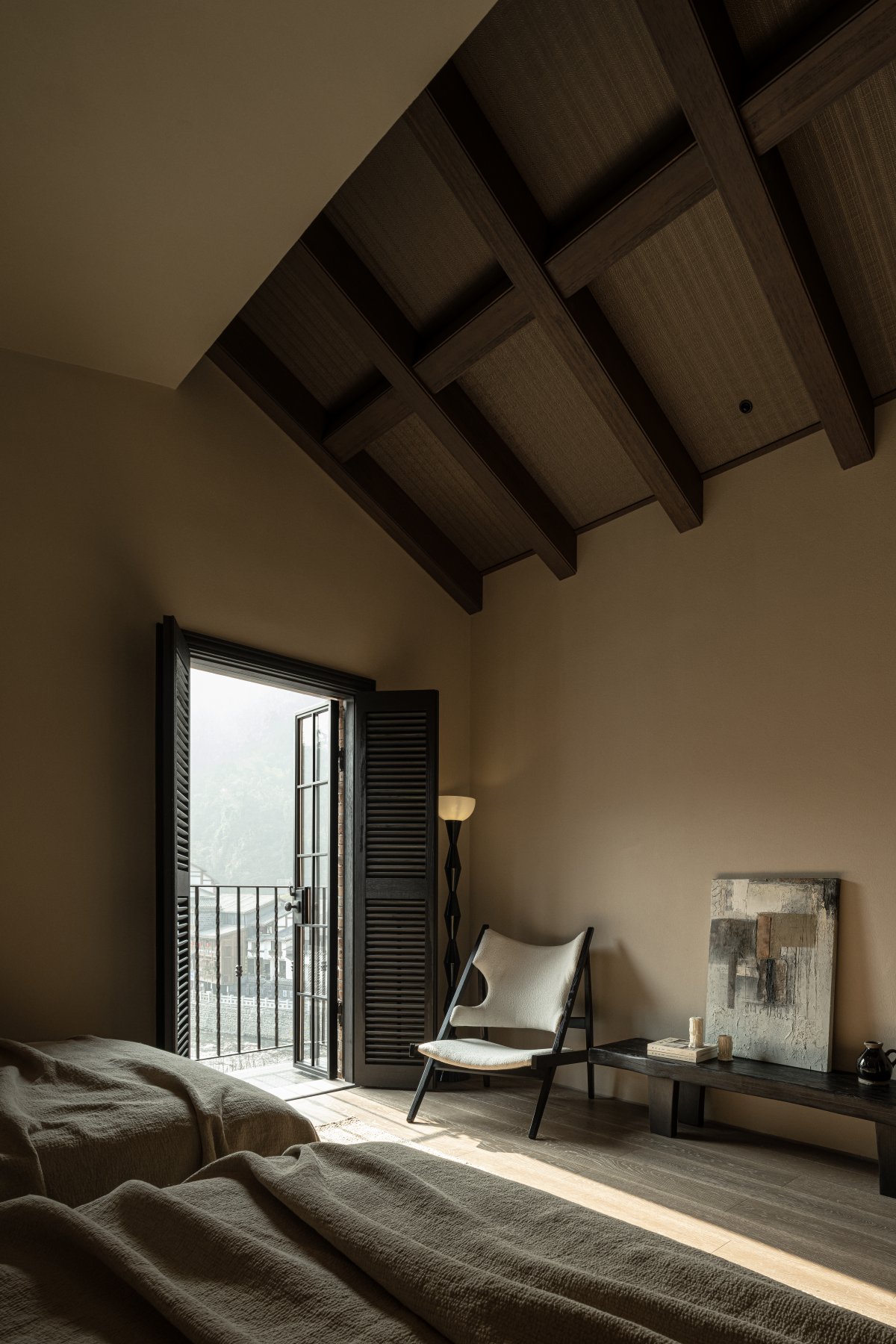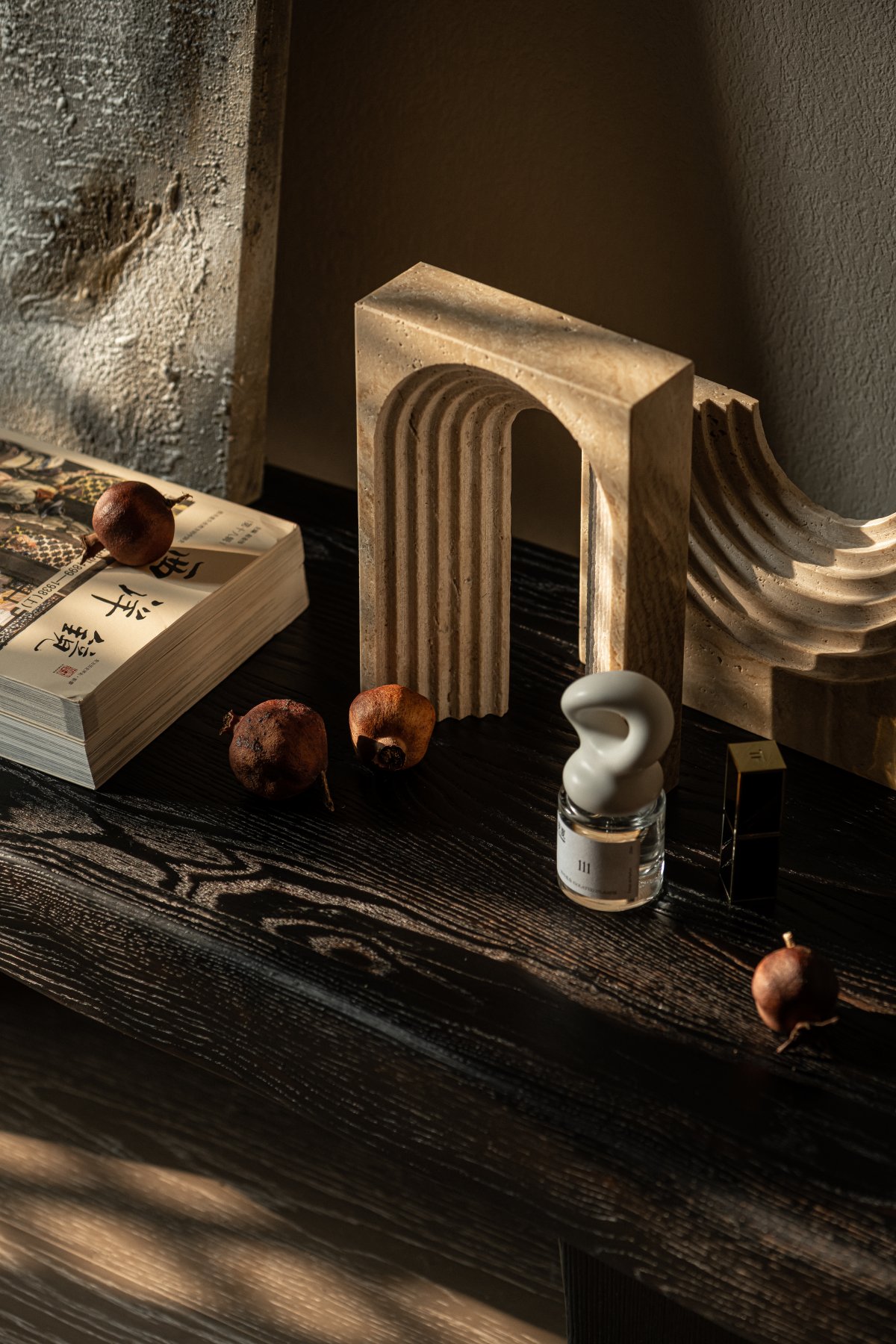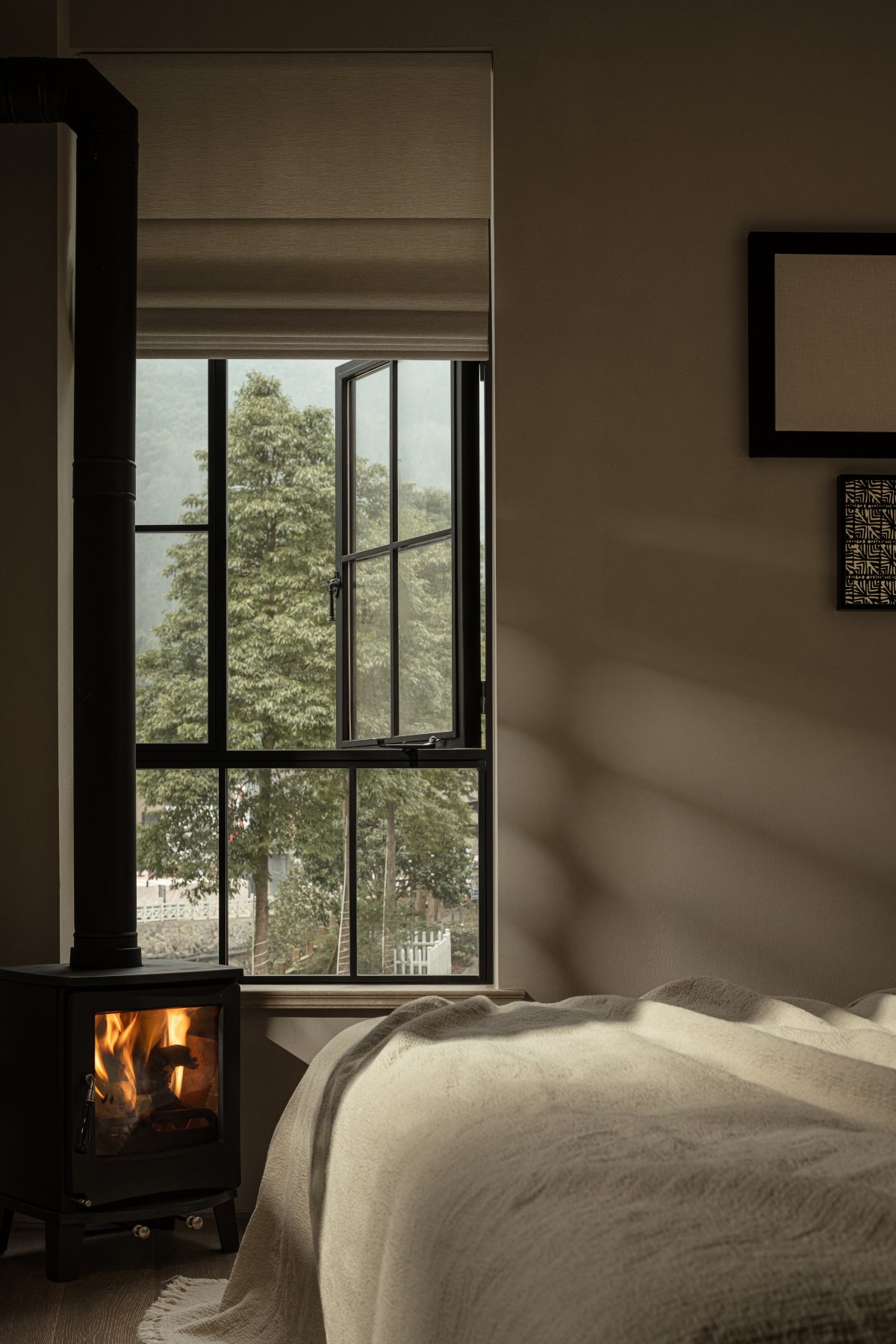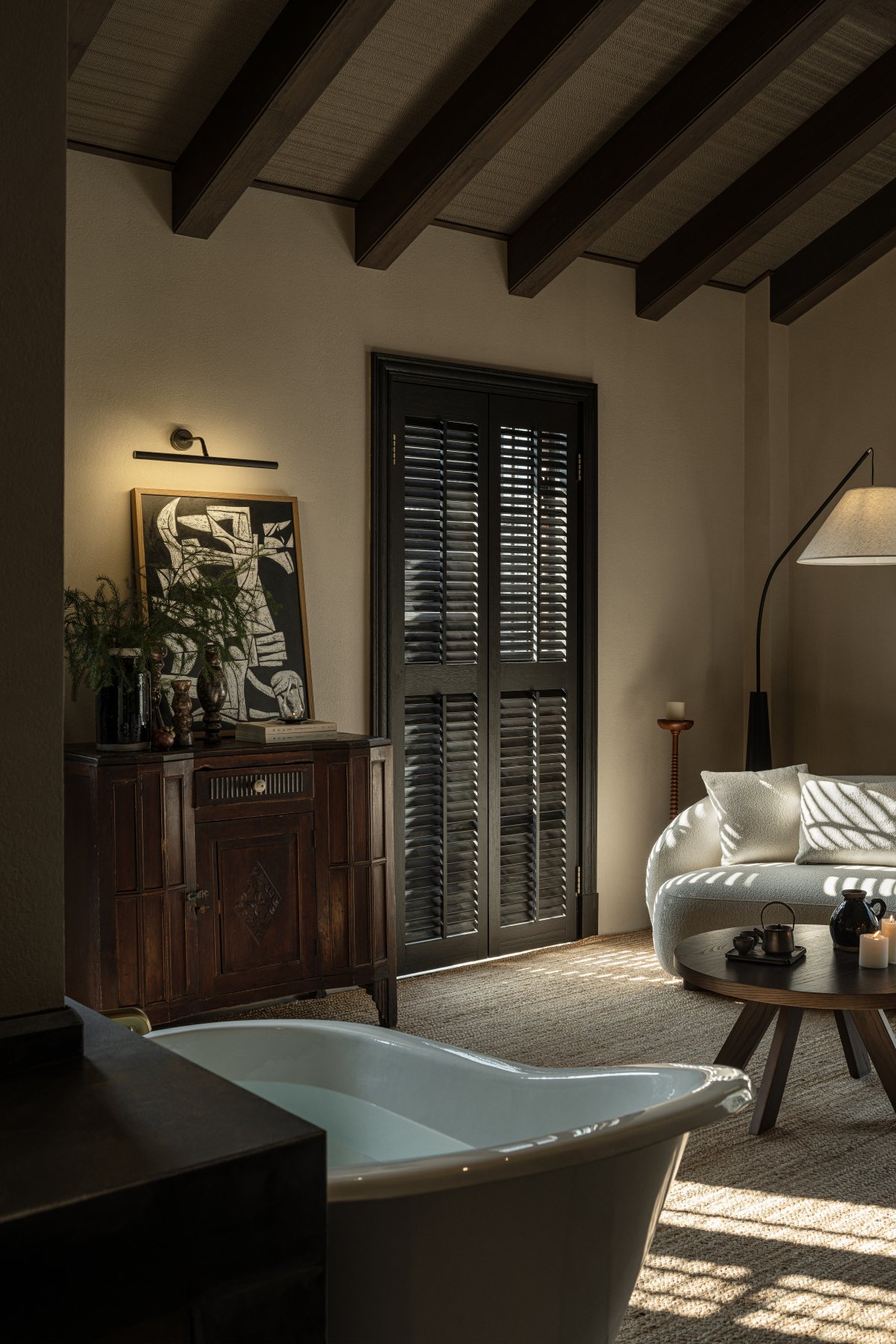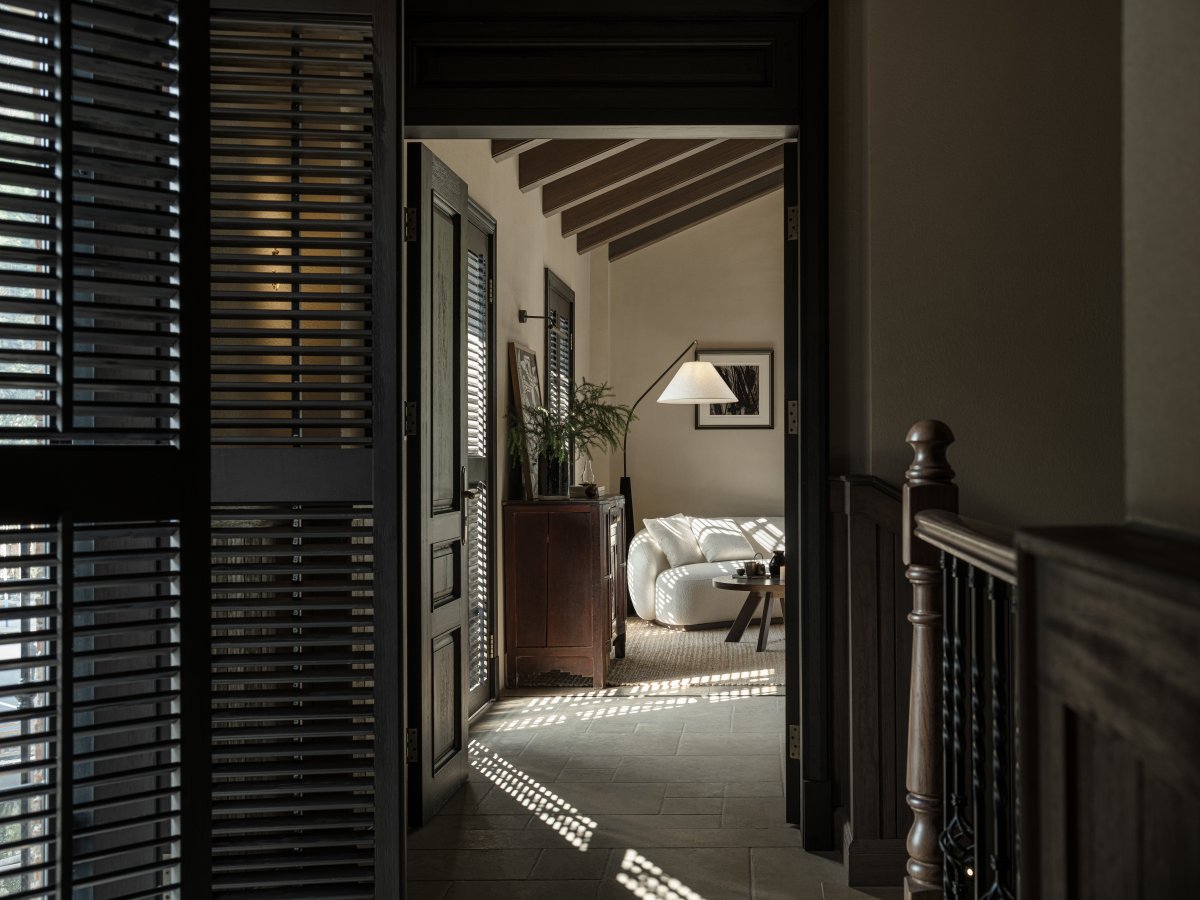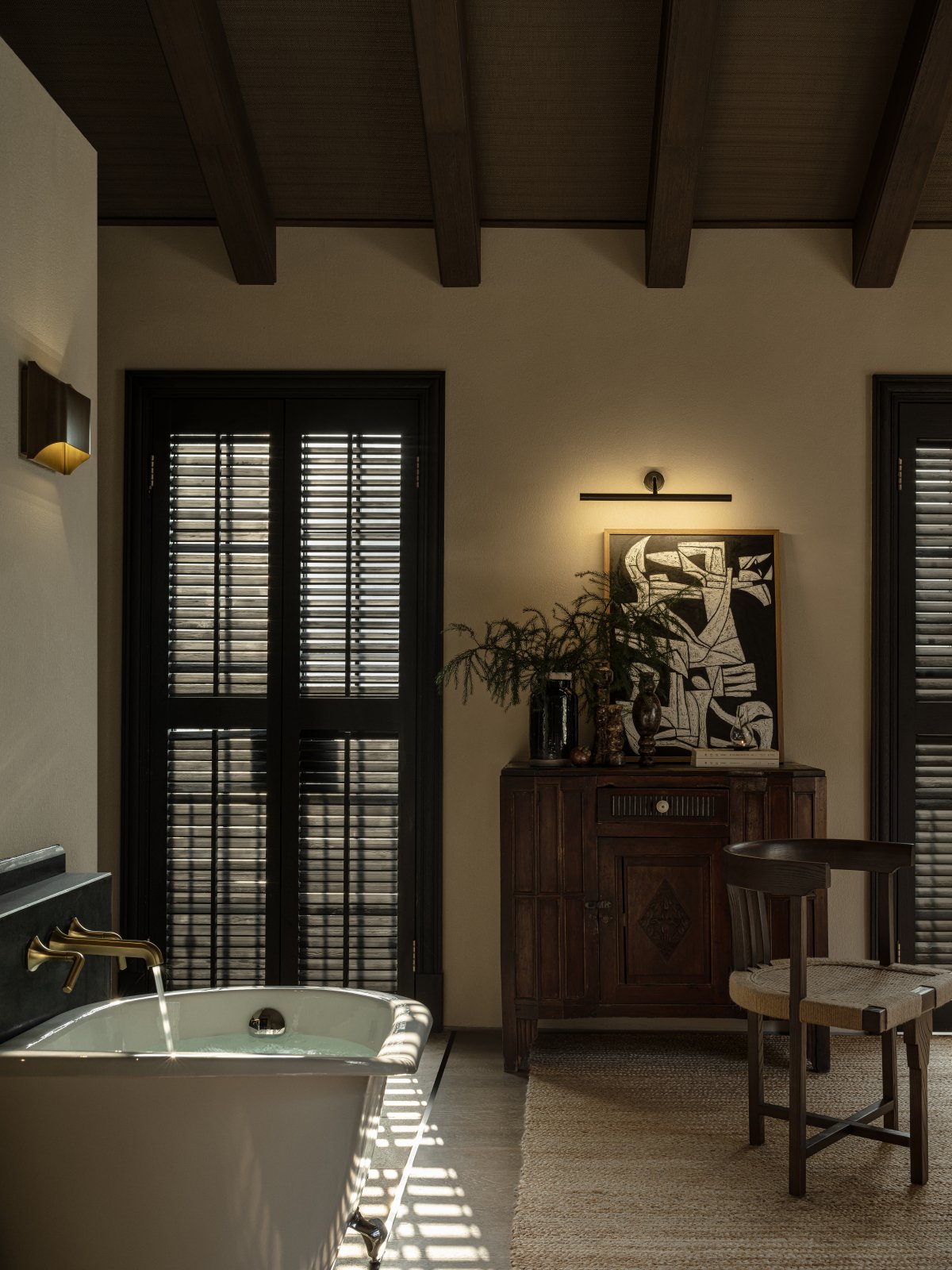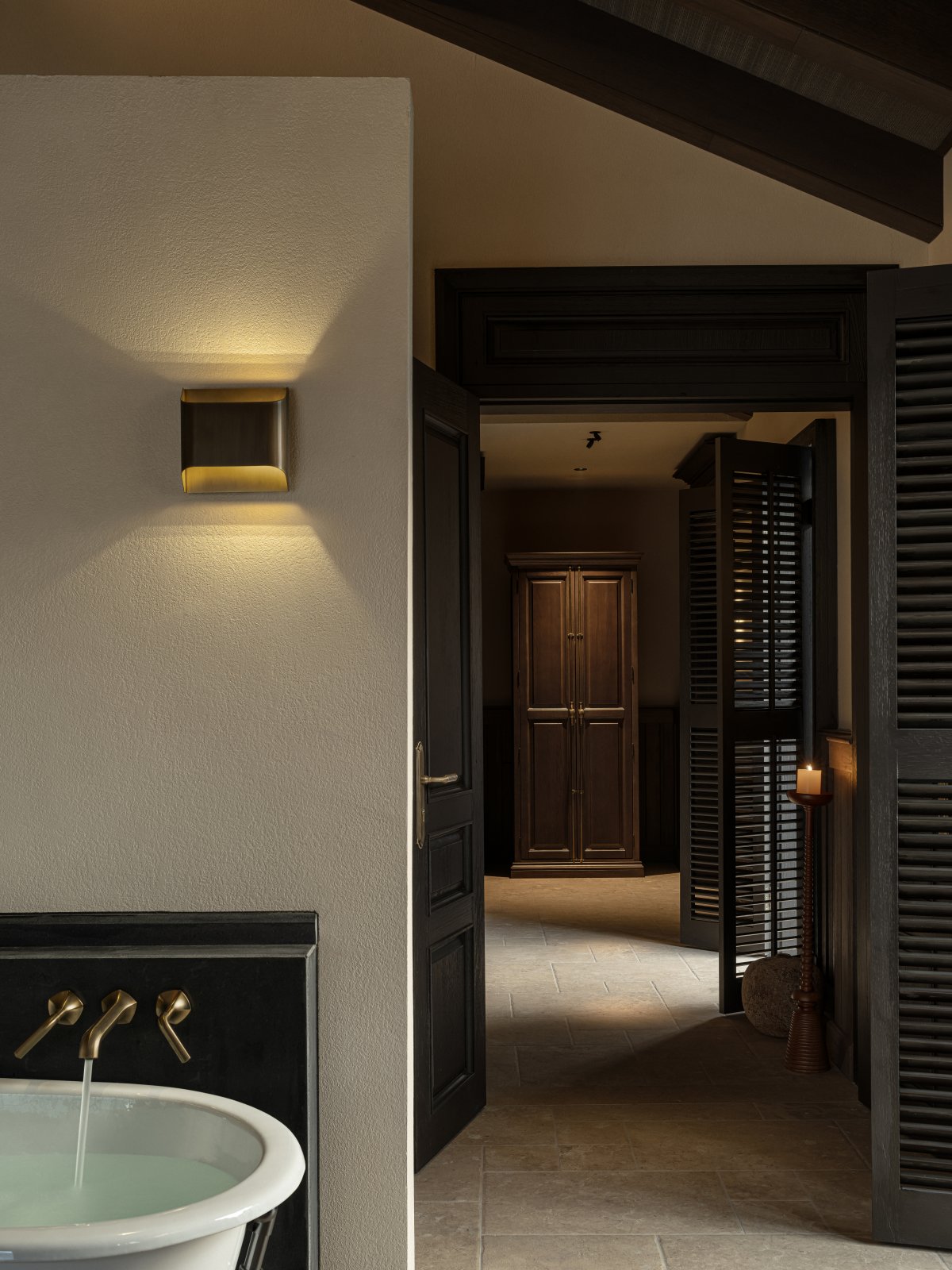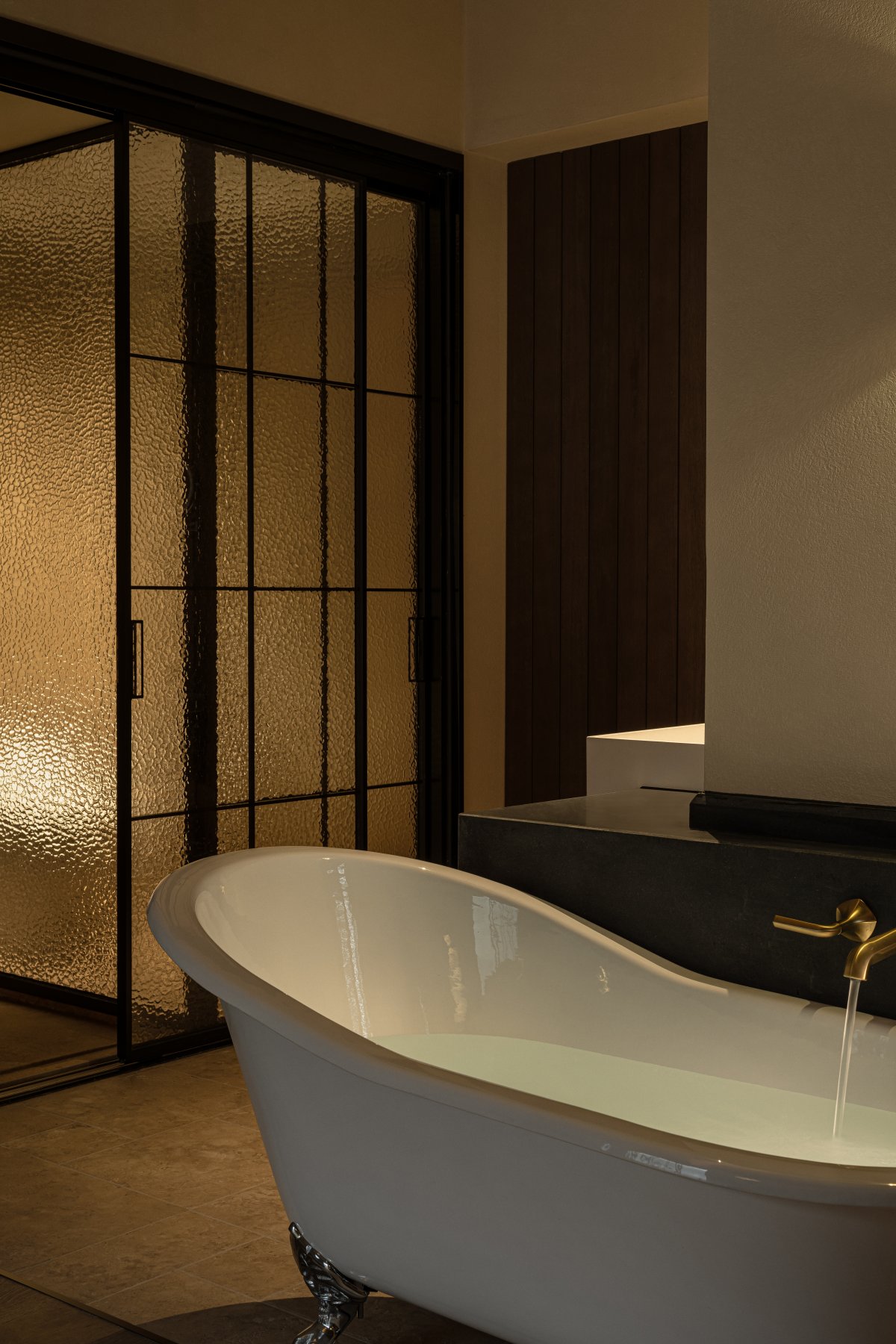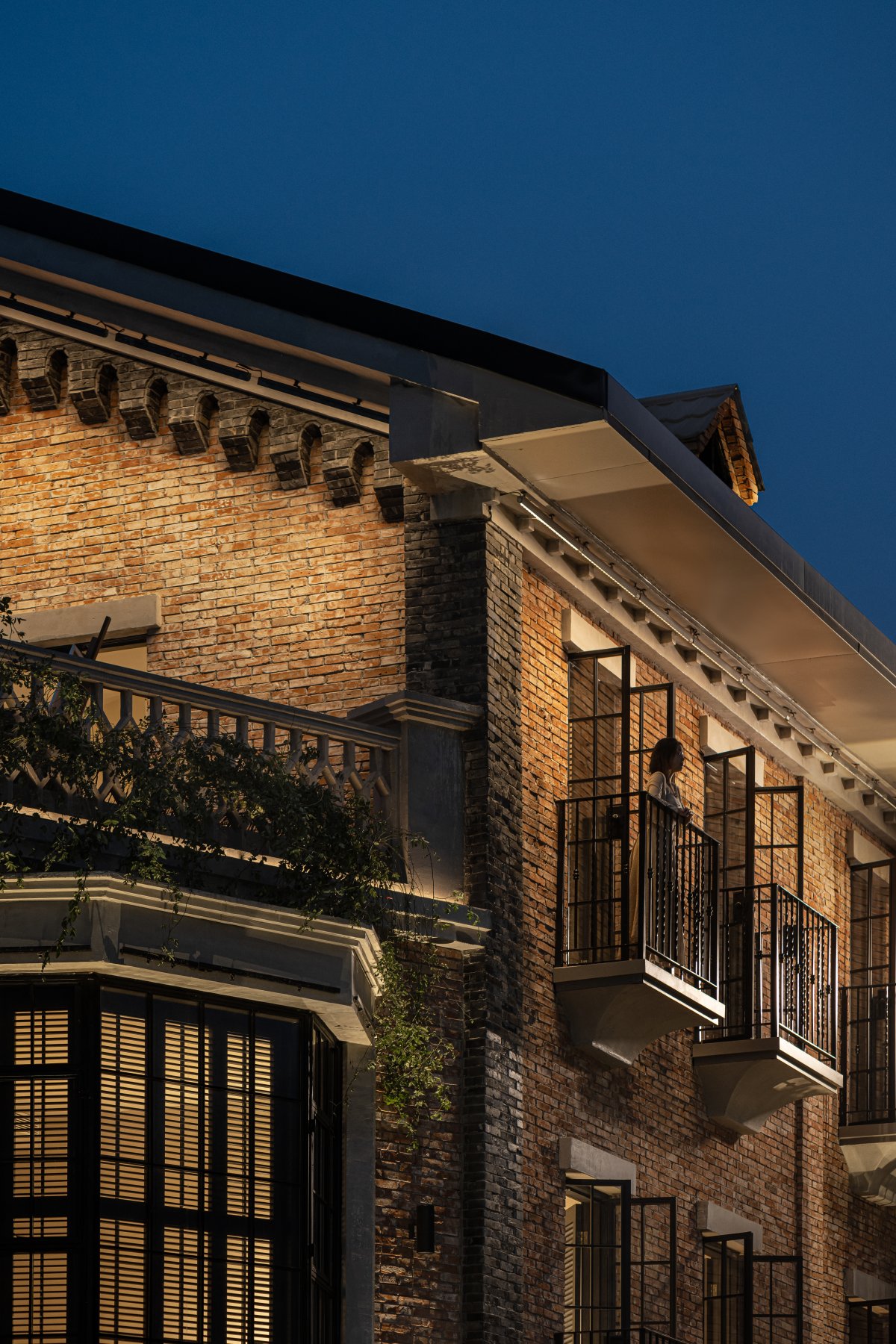
Ruojianxi is located in Xiling Town, a valley town surrounded by two mountains at the foot of Xiling Snow Mountain, 100 kilometers west of Chengdu City. In the front of the town is the Xiling Snow Mountain, which is covered with snow like silver all year round, and in the back is the Chengdu Plain, which is covered with thousands of miles of fertile land. It is also known as Shuanghechang by locals, named after the confluence of two streams formed by melting snow on the Xiling Snow Mountain. Ruojianxi is located at the confluence of these two rivers.
The Context of Humanity
Green bricks, stone tiles, shuttered windows and mini balconies. In the most central part of West Ridge Town, a three-story brick building, bounded by the riverbank, encloses a low and gentle skirt wall, with a somewhat quiet and tranquil atmosphere.
The appearance of Ruojianxi adds a touch of refinement and delicacy of a Republican-era mansion to this quaint and natural town. Dayi County, where Xiling Town is located, is the most concentrated area of mansion culture in Chengdu. However, Ruojianxi filters out the more traditional aspects of Chengdu's mansion culture, and instead approaches the relatively contemporary aesthetics of the public houses of the Jianghu region. In this way, Ruojianxi finds a spatial carrying capacity for the laziness and relaxation of daily life.
The Order of The Light
Taking the direction of the first morning light as a guide, exploring the interior of the space, the open and continuous living scene unfolds sequentially.
The first floor is the public space. The windows and doors bordered by black steel are high and narrow, defining the narrative rhythm of the space and giving the building a romantic and restrained character. When the folding glass doors are fully opened, the indoor reading area is connected to the outdoor area, bringing the landscape and the town into full view, and the space reveals a completely different kind of transparency and openness.
Inside the lobby, the mood of the space begins to unfold. The handmade floor tiles close to the color of the earth, the rough touch on the warm white walls, the dark wood panels on the ceiling, the wood-colored furniture and the white sofa, all of these together construct a wabi-sabi inner mood, and the simplicity contains the power of subtlety and serenity.
The Inner Sense
Turning into the staircase, we enter the deeper part of the space. As darkness and shadows become the context of the space, the more subtle, dense and infectious parts of the space are gradually revealed.
Light is the key to control the mood of the space. In order to block the intrusion of the fierce summer sun and allow the space to gain quietness and tranquility, adjustable black wooden blinds are used in the second and third floor spaces, both in the corridors and in the rooms. This changes the way light enters the space and makes the presentation of light and shadow an experience rooted in everyday aesthetics.
As daylight passes through the blinds and casts slanted strips of shadow around our feet, the space becomes as if it were breathing and alive, resonating in an ineffable way with our innermost being.
The Dwelling
Ruojianxi has a total of 7 guest rooms. In terms of spatial atmosphere, it continues the relaxation and delicacy of the lobby, constructing a soft living routine.
Inside the room, beige walls with little carving, wood-colored furniture full of warmth, linen fabrics that return to the basics, and contemporary artworks adorn the room. The beauty of everyday life, after stripping away all the flashiness and impulsiveness, reveals a rare and precious purity. And this purity is desired in a state of “living elsewhere”.
The space is silent, perceived by the body, adjusting the spatial scale at the right time and creating a gentle sense of wrapping. The relationship between space and people becomes simple and clear, presenting a fascinating gesture of mutual care. Under this care, everyday objects take on a completely different luster, which Bachelard calls “amber warmth”. Thus, the world of the senses has the possibility to enter the territory of the spirit.
In the spatial philosophy of living, the sloping roof has been emphasized as the origin of the image of living, simply because it constructs for us a dream of living that longs for shelter and peace.
The three rooms on the third floor of Ruojianxi have spared no effort to expose the sloping roofs in the form of wooden structures, forming a high open space that gathers upwards. When people live in such a space, on one hand, they feel the shelter and peace brought by the space, and on the other hand, they also enjoy the coziness and freedom of looking at the mountains.
Looking into the distance. Cast your gaze into the distance and feel the presence of self, haze, mountains, and all things.
Staying in such a small town surrounded by mountains, inhabiting such a warm residence with both inward and outward attributes. Watching the stream flowing in front of the door, feeling the collision and fusion of Eastern and Western cultures in the space, we are now all entrusted to the time, and only need to wait and accompany.
- Interiors: Much Collection Modest Design
- Photos: Li Heng

